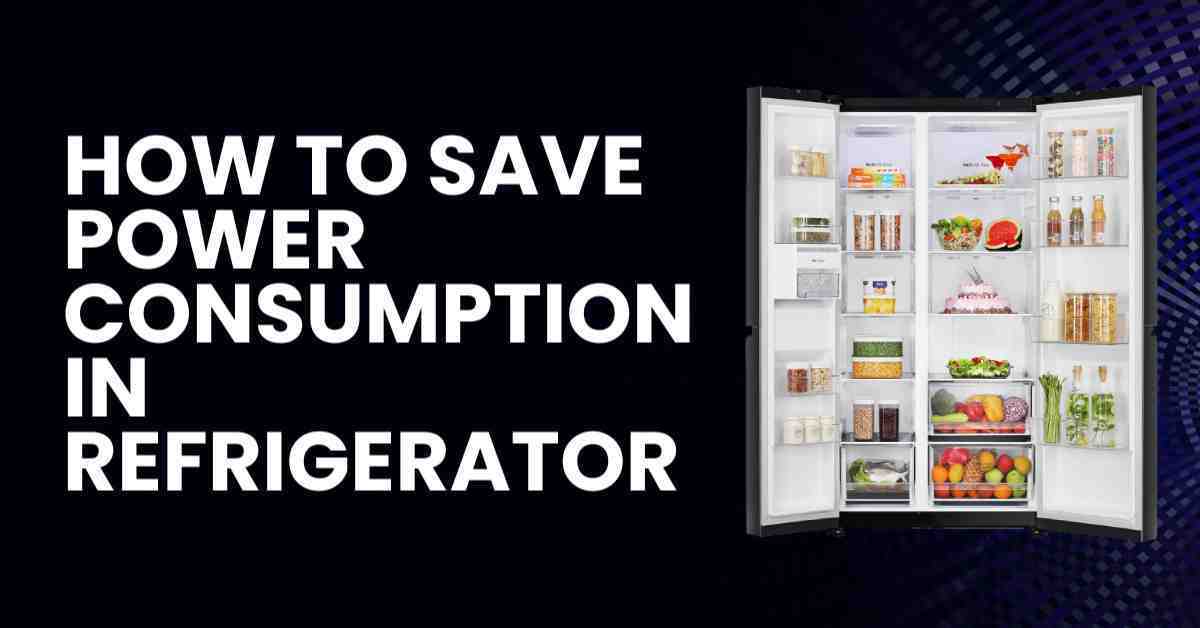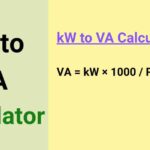Saving power in your refrigerator is not only an advantage to your pocket but also to the environment.
There are major strategies that, when you understand and implement them can go a long way in reducing the amount of energy used by this most essential household appliance.
Such a guide will offer you energy-efficient refrigerator tips and techniques on how to save power consumption in your refrigerator hence reducing electric bills while maintaining its effectiveness.
Many different studies and expert suggestions have shown that it does not take much; therefore, even small changes can mean huge savings in energy.
Here are my 15 tips on How to Save Power Consumption in Refrigerator.
#1. Placing the Refrigerator correctly.

The location of the refrigerator affects its energy use with greater effect.
For instance, placing it next to a heat source such as an oven or under direct sunshine will make the fridge work harder thus consuming more power.
Moreover, inadequate ventilation makes the refrigerator overheat hence having to work even more intensively thereby using up more energy.
To avoid this, ensure your refrigeration unit is placed somewhere cool with enough airflow away from heat sources as well as sunlight rays.
#2. You need to leave space around the Refrigerator.
Remember to leave some space all around the refrigerator when you install it. Confirm that there is enough clearance for air exhaust at the base and back wall of the fridge.
Also, make sure that no objects block the vents or grills to allow the compressors to release heat efficiently.
Failing to ventilate properly will cause overheating of the compressor and excess energy consumption to keep food cold.
#3. Cleaning the back of the Refrigerator.
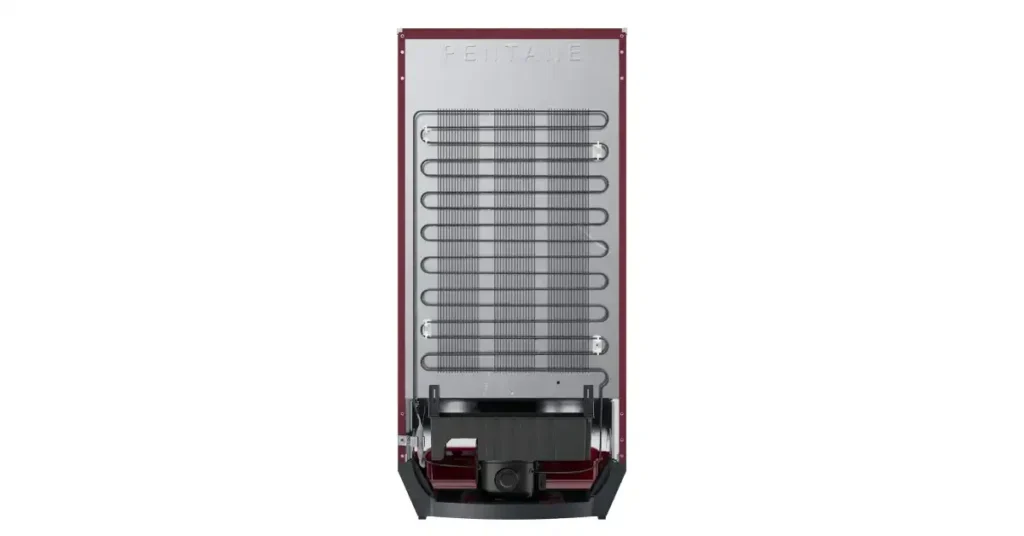
In addition, clean behind your refrigerator regularly. Stubborn dirt and dust will result in higher energy levels being used by it.
Take care not to let dust collect on condenser coils situated at the front and underneath your fridge.
This can be done by using a bristle brush or better still a handheld vacuum cleaner.
Cleaning them regularly saves more work since dirty ones consume more electricity because they require much power hence causing further problems.
#4. Cleaning the inside of your Refrigerator.
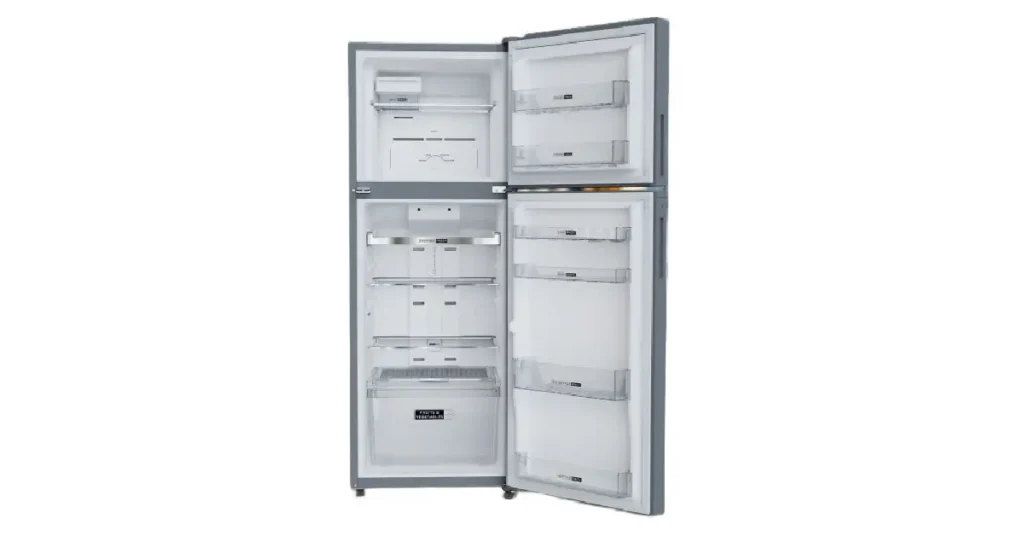
You must keep the interior of your fridge neat and free from dirt. If there are any strange or awful smells coming from your appliance, take everything out and remove the shelves.
Wash the shelves with soapy water and use a paste made of baking soda to cleanse the inside parts.
Make sure everything is dry before reassembling it and restocking it. Regular cleaning prevents odors and makes your equipment efficient in service delivery.
#5. Set the right temperature.
To ensure optimal energy efficiency, it is important that you periodically check the temperature settings of both the refrigerator and freezer units.
The appliance will have to work harder if they are set too low to keep them leading to high energy consumption rates.
Likewise, if they are set too high then your food might not be properly preserved leading to wastage.
The recommended temperatures for a fridge should be 36-38°F while those in a freezer should range from0-5°F.
#6. Keep the doors closed whenever possible.
This makes the fridge have to work more to cool down the warm air as well as maintain the desired temperature.
Closing it immediately after you finish using it also reduces the rate at which warm air enters and cold air escapes thereby reducing the workload of your fridge and leading to energy savings.
#7. Defrosting food in the Refrigerator.
One best ways of saving energy is defrosting food in a refrigerator.
This helps cool down the refrigerator whenever frozen food is put in it for defrosting, reducing its operating load.
This will not only save you energy but also ensure that your thawing takes place safely and under controlled conditions.
#8. Do not store warm or hot food in the fridge.
Thus, if we keep hot or warm food inside a fridge, its internal temperature may rise, making it require more power to reduce it.
Consequently, this can lead to higher energy use. Particularly, never put your leftovers in a refrigerator until they’re cooled down enough so that they don’t get spoiled by bacteria while still inside it.
Nevertheless, don’t let food sit out at room temperature for too long as this can cause bacterial growth.
#9. Regularly inspect door seals and replace them if they are not sealing properly.
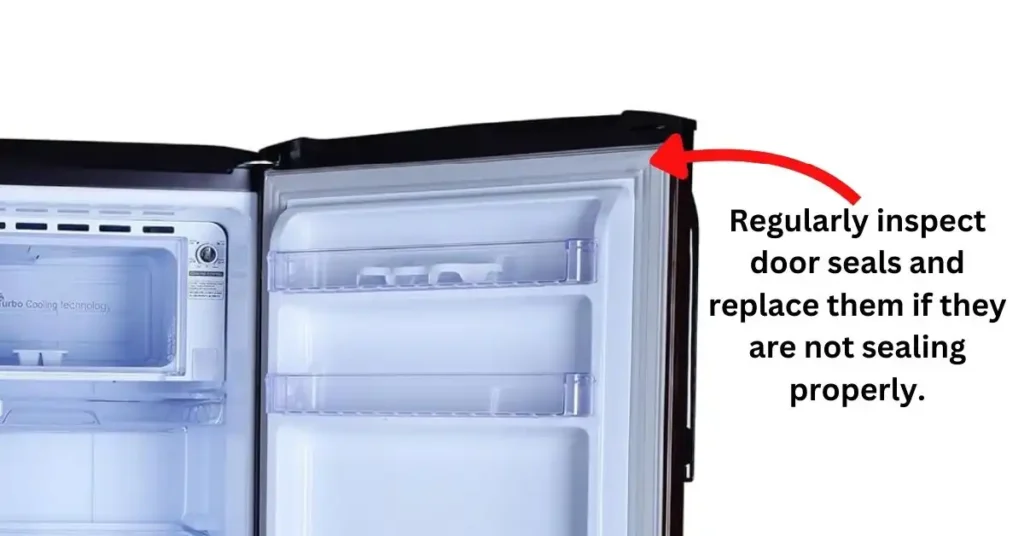
To keep your refrigerator at the right temperature, there is a need for properly functioning door seals.
Otherwise, cold air can escape from it thus making it overwork to maintain its temperature.
As a result, more energy is consumed. Therefore, there is a need to check out your door seals regularly and replace them if they don’t seal well enough.
#10. Remove dirt and debris from the condenser coils.
The cooling process of your refrigerator is made possible by the condenser coils.
With time, however, these coils tend to accumulate dust and dirt which might hinder their performance making your fridge struggle harder and hence consuming more power unnecessarily.
Regular cleaning of the condenser coils can make them function better thereby saving energy in your fridge.
#11. Rearrange and make sure items are placed in a prominent position.
Energy consumption in refrigerators may vary depending on how you organize foodstuff inside it.
Placing items within reach allows for quick access and simultaneously minimizes exposure time when searching as less warm air enters while less cool air escapes reducing this appliance’s electricity usage.
#12. Make sure the refrigerator is well-stocked but not overly packed.
A stuffed refrigerator retains cold better than an empty one.
Nevertheless, be cautious not to overfill it because this can limit airflow and force the fridge to work even more.
The best efficiency is made possible when you keep your fridge about three-quarters full.
#13. Store food in proper containers.
It’s like putting your food in a warm nest that uses the right kind of containers. But hey, you do not have to crowd them; your fridge also needs air.
Keep it light and ventilated, and besides saving energy, your munchies will always remain in their best state ever.
A tight fit but not too tight is what counts most in there. This way, you’re able to prevent any extra work for your refrigerator and save on energy bills as well.
#14. Avoid placing warm food directly into the refrigerator.
Placing hot food directly into the refrigerator may cause its internal temperature to rise forcing it to work harder towards cooling down.
It may increase power consumption henceforth. Thus, you must allow your food to cool first before storing it in the fridge. Cooling it for too long at room temperature, however, can result in bacterial growth.
#15. Utilize the power-saving or vacation mode options if they are accessible.
When possible, engage its power saving or vacation mode if yours comes with this option as well.
These settings reduce power consumption when the fridge is not being used regularly like when you are away.
Activating these modes only helps in lowering electricity bills which can simply save power without suffering much pain hence effortlessly done by anyone doing so intentionally.
FAQs
How often should I replace the water filter in my refrigerator, and does it affect energy efficiency?
The refrigerator’s water filter needs to be changed every six months or as recommended by the manufacturer. This can cause a decrease in the flow rate of water and ice-making capacity thus affecting the efficiency of your unit. Regular replacement guarantees prolonged durability as well as high performance and efficiency, which ensure that your fridge runs smoothly.
What is the ideal humidity level for a refrigerator, and how can I maintain it for energy efficiency?
optimal moisture content for a refrigerator ranges between 30% and 50%. For this to happen, ensure that the door is properly sealed all around and confirm if your model has a humidity control setting. Extra humidity causes more work for the compressor, hence minimizing the electricity efficacy so regular visits may help reduce the consumption of power.
How can I tell if my refrigerator’s insulation is working properly, and what should I do if it’s not?
If you notice unusual warmth around its edges, increased energy bills, or spoiling food then the insulation in your fridge is faulty. However, if it gets damaged, it will consume more energy than necessary. In situations like these; check the door seals for any faults to regain its energy usage.
How can I calculate the annual energy consumption and cost of my refrigerator, and how does this information help me make more energy-efficient choices?
Well, let’s just say it’s got quite an appetite for electricity. But how much? That depends upon how hungry it is (wattage), how long it chews each day (hours used per day), and over how many days (365, because it eats every day).
The following is the annual energy consumption;
1. First, get to know how many watts your fridge needs.
2. Second, find the number of hours your fridge works in a day.
3. Thirdly, multiply the wattage and its running hours for all the 365 days in a year.
4. By this time I assume we are talking about kilowatt-hours (kWh), so divide by 1000 because that is how many watts are equivalent to one kilowatt.
Now let’s use some numbers with this formula;
Annual Energy Consumption (kWh) = Wattage × Hours Used Per Day × 365 ÷ 1000
Let us say that you have a refrigerator that consumes about 500 watts of power and it runs for approximately eight hours every day then mathematically:
Annual Energy Consumption = 500 × 8 Hour × 365 ÷1000 =1460 kWh
Next, to calculate what it costs you need to know the electricity supposed rate which is INR 6.47 per kWh.
This means you will do something like this: Annual Cost =1460 kWh × INR 6.47 per kWh.
So now you get an annual cost of INR 9446.2.
Conclusion.
In conclusion! How to save power consumption in refrigerator includes routine maintenance, using energy-saving settings, and providing good insulation.
Always choose energy-efficient models with the best ratings when buying a new unit to save more money.
We invite you to share your tricks and experiences in the comments below as other people will find them useful for achieving greater power efficiency.
To notice significant declines in your electricity bills and contribute towards a sustainable environment begin implementing these strategies right now. Take action immediately so that you can have an energy-efficient refrigerator.
